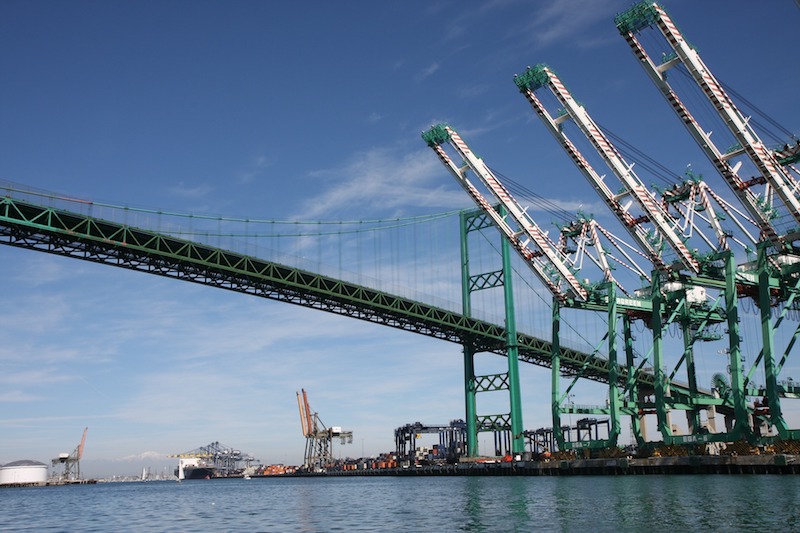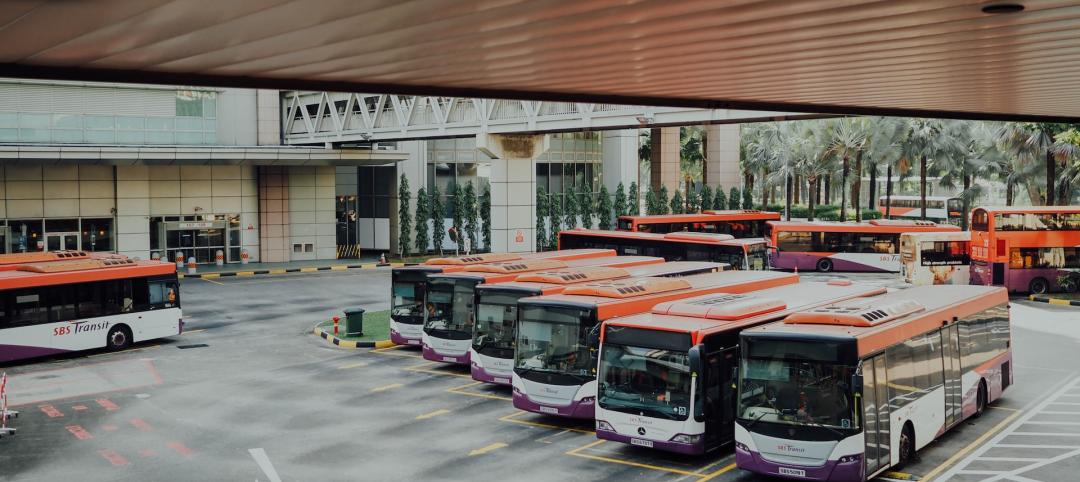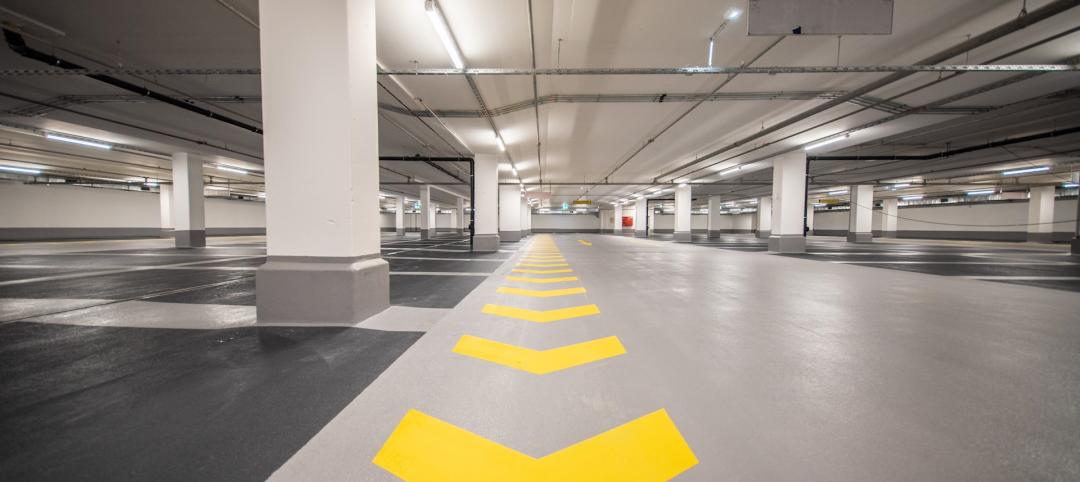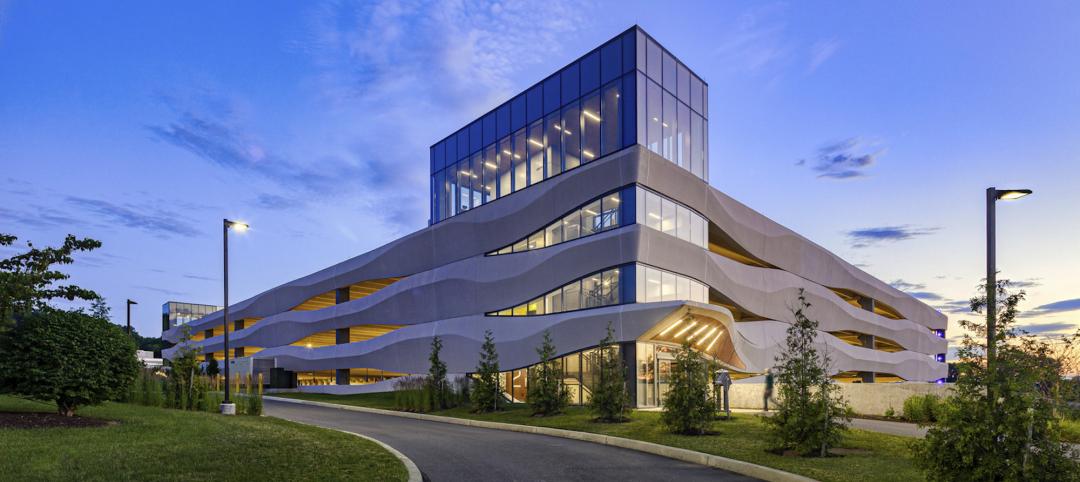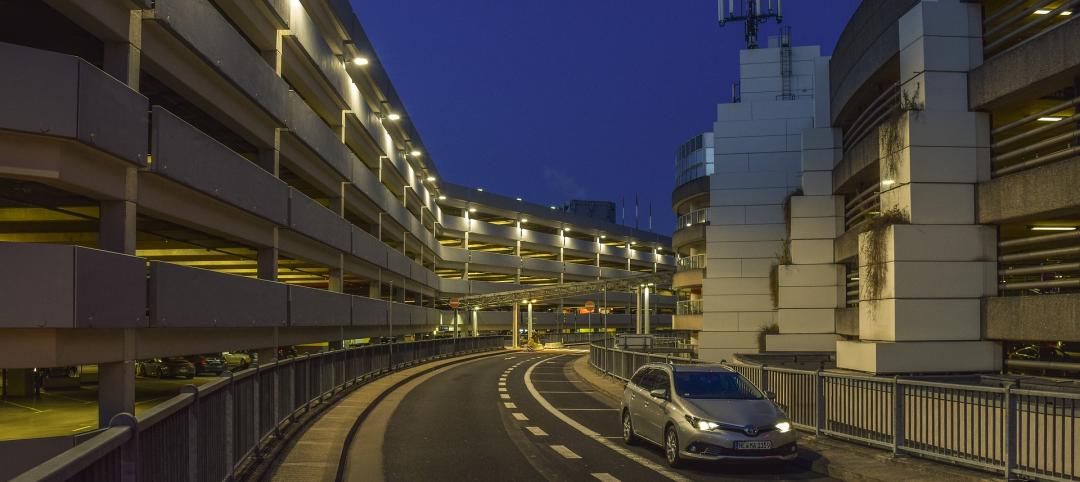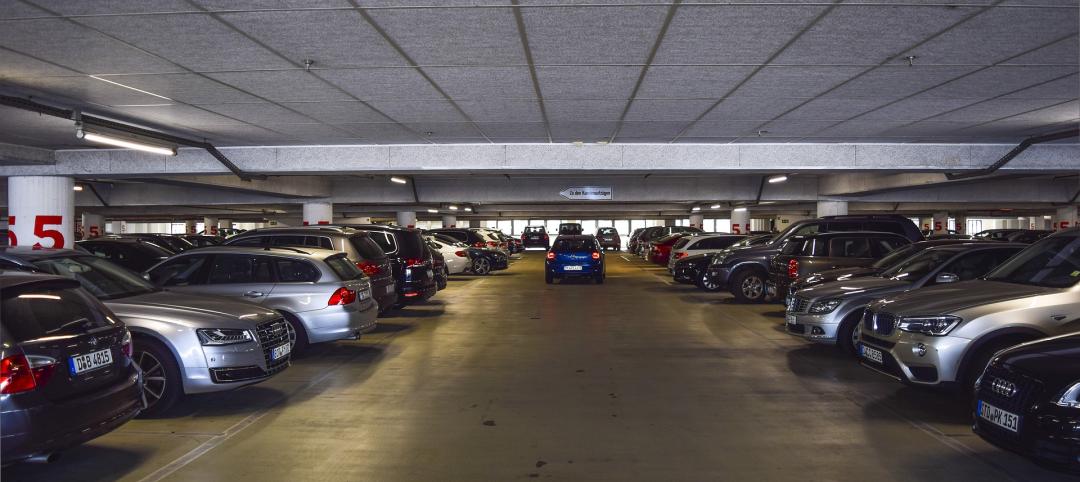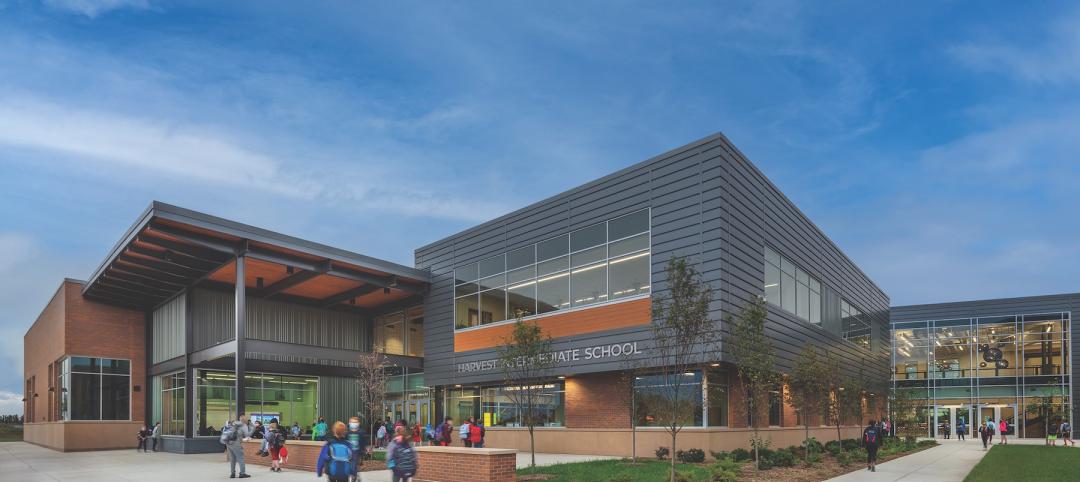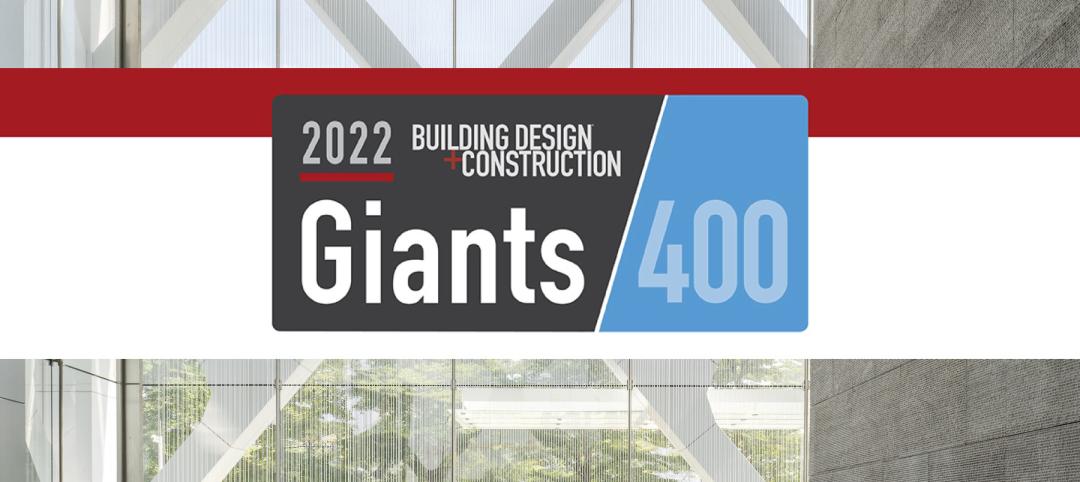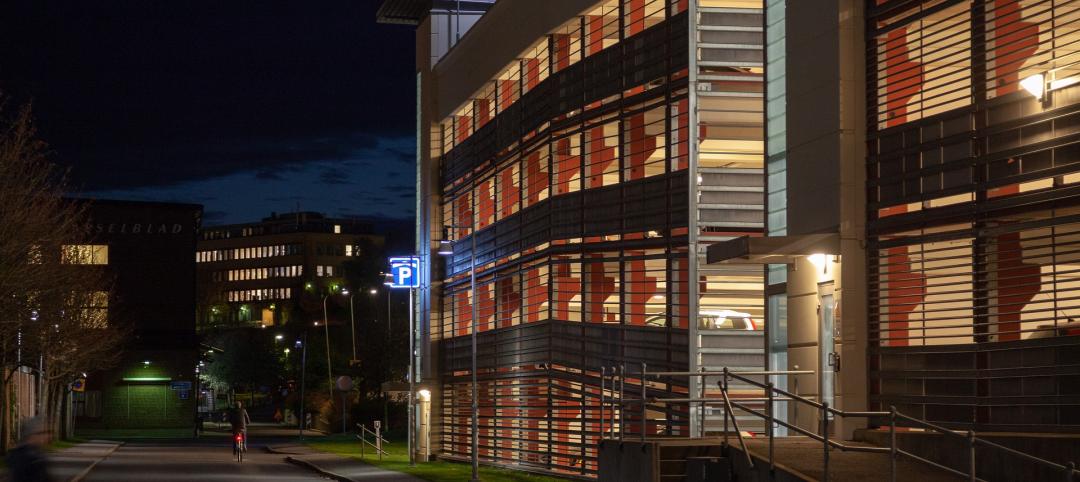The $5 billion Panama Canal expansion (Panamax) opened in late June 2016, making direct access of larger ships from China and elsewhere to America’s East Coast ports more expedient.
But well before that opening, three dominant U.S. ports were engaged in large-scale growth efforts to hold onto and increase their share of that anticipated container trade.
Ports of Los Angeles and Long Beach, Calif., and the Port of New York and New Jersey have spent the past two decades deepening channels, raising bridges, and investing in terminal automation and dockside infrastructure (see chart).
Since Panamax opened, the Port of Long Beach has completed a $1.3 billion Middle Harbor Terminal expansion; and the Port of Los Angeles—whose container volume peaked this year at 8.8 million Twenty-Foot Equivalent Units (TEUs)—completed a $500 million TraPac Container Terminal Expansion.
The Port of New York/New Jersey spent $2.1 billion to deepen its harbor to 50 feet. And by opening an elevated Bayonne Bridge, the largest container ships now have access to the Port of NY/NJ.
CLICK IMAGE TO ENLARGE
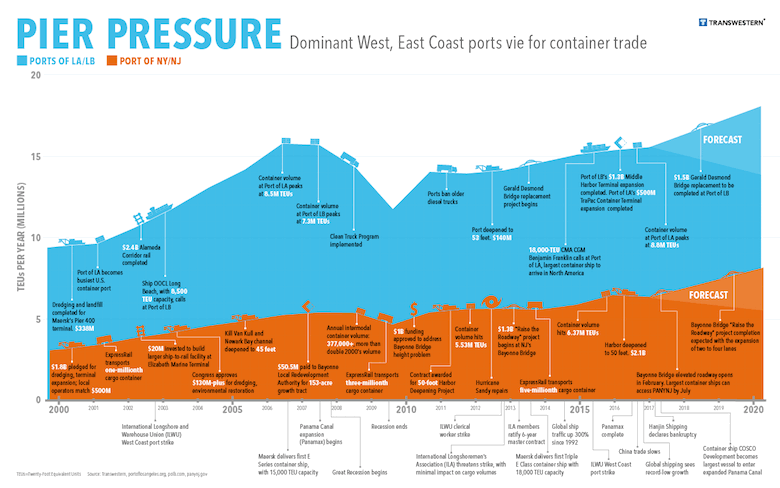 This chart shows the relationship between the development and construction actvities at America's three largest ports— Los Angeles, Long Beach and New York/New Jersey—and their increases in container volumes. Image: Transwestern.
This chart shows the relationship between the development and construction actvities at America's three largest ports— Los Angeles, Long Beach and New York/New Jersey—and their increases in container volumes. Image: Transwestern.
Despite predictions that the Panama Canal widening would disseminate some shipping away from major ports to an array of smaller markets on the Gulf and East Coasts, the ports of Los Angeles and Long Beach and Port of NY/NJ “have retained their stature as the dominant entry points for containerized merchandise and manufacturing components to be assembled domestically,” observe two executives from Transwestern, the national real estate firm.
In its recent edition of “Ask the Expert,” Transwestern’s Director of Research for New Jersey Matthew Dolly and Research Manager for Southern California Michael Soto point out that, as activity at these ports increases, rent rates have been rising, but still take a back seat to transportation costs and access to labor as factors determining where businesses select space.
Panamax has caused some shifts in where ships from Asia and elsewhere unload in the U.S. The Ports of Long Beach and Los Angeles, America’s two largest ports, once received half of all containerized goods entering the U.S. Last year they handled a combined 15.6 million TEUs, or just under one-third of national volume. The authors state that these ports’ combined volume is projected to increase by 3.9% annually through 2040.
The Port of NY/NJ recognized opportunities from increasing shipping travel through the Suez and Panama Canals. Last year, its annual volume peaked to 6.25 million TEUs, or 13% of U.S. volume, and became America’s third-largest port. The authors say that this port has been “catching up” to its West Coast competitors.
In general, busy ports are catalysts for industrial and commercial development around them. This is even truer now that several ports have positioned themselves to receive higher container volumes from giant ships.
About one-third of containerized cargo entering the L.A and Long Beach ports stays in the region to serve 20 million local consumers. And given New York and New Jersey’s population density, they are lucrative destinations for imported goods, many of which travel through the Suez Canal.
“As the world’s concentration of low-cost labor shifts from China to India and other markets bordering the Indian Ocean, the volume of goods passing through the Suez Canal to enter the U.S. via East Coast ports will likely increase,” the Transwestern authors write.
Warehouse and distribution spaces on both coasts are at a premium. And, say the authors, it appears that retailers and manufacturers seem willing to accept higher rents to be closer to those distribution points nearer the ports. “Developers must decide how far away from the region’s population center they can build before the distance makes a location impractical for distribution centers,” the authors write.
The ports in southern California and the New York metro region have committed to maintaining and improving their surrounding infrastructures to be able to handle the transportation of high cargo volumes. Last year, for example, New Jersey’s Transportation Trust Fund earmarked $400 million in annual funding for road, bridge and transit improvements.
In Southern California, major infrastructure improvements include the $1.5 billion replacement of the Gerald Desmond Bridge in Long Beach, to allow access to the port for the tallest container shops. The new bridge will have six lanes (two more than the existing span), as well as a bike lane and observation deck. It’s scheduled for completion next year, at which point it will span 8,800 feet.
Related Stories
Giants 400 | Feb 6, 2023
2022 Transit Facility Giants: Top architecture, engineering, and construction firms in the U.S. transit facility sector
Walsh Group, Skanska USA, HDR, Perkins and Will, and AECOM top BD+C's rankings of the nation's largest transit facility sector architecture, engineering, and construction firms, as reported in the 2022 Giants 400 Report.
Giants 400 | Feb 6, 2023
2022 Parking Structure Giants: Top architecture, engineering, and construction firms in the U.S. parking structure sector
Choate Parking Consultants, Walker Consultants, Kimley-Horn, PCL, and Balfour Beatty top BD+C's rankings of the nation's largest parking structure sector architecture, engineering, and construction firms, as reported in the 2022 Giants 400 Report.
Giants 400 | Dec 1, 2022
Top 40 Parking Structure Contractors + CM Firms for 2022
PCL Construction, Balfour Beatty, McCarthy Holdings, and Level 10 Construction top the ranking of the nation's largest parking structure contractors and construction management (CM) firms for 2022, as reported in Building Design+Construction's 2022 Giants 400 Report.
Giants 400 | Dec 1, 2022
Top 45 Parking Structure Engineering + EA Firms for 2022
Walker Consultants, Kimley-Horn, Wiss, Janney, Elstner Associates, and KPFF Consulting Engineers head the ranking of the nation's largest parking structure engineering and engineering/architecture (EA) firms for 2022, as reported in Building Design+Construction's 2022 Giants 400 Report.
Giants 400 | Dec 1, 2022
Top 50 Parking Structure Architecture + AE Firms for 2022
Choate Parking Consultants, Gensler, Clark Nexsen, and Solomon Cordwell Buenz top the ranking of the nation's largest parking structure architecture and architecture/engineering (AE) firms for 2022, as reported in Building Design+Construction's 2022 Giants 400 Report.
Transportation & Parking Facilities | Oct 20, 2022
How to comply with NYC Local Law 126 parking garage inspection rules
Effective January 1, 2022, New York City requires garage owners to retain a specially designated professional engineer to conduct an assessment and file a report at least once every six years. Hoffmann Architects + Engineers offers tips and best practices on how to comply with NYC Local Law 126 parking garage inspection rules.
Giants 400 | Aug 22, 2022
Top 90 Construction Management Firms for 2022
CBRE, Alfa Tech, Jacobs, and Hill International head the rankings of the nation's largest construction management (as agent) and program/project management firms for nonresidential and multifamily buildings work, as reported in Building Design+Construction's 2022 Giants 400 Report.
Giants 400 | Aug 22, 2022
Top 200 Contractors for 2022
Turner Construction, STO Building Group, Whiting-Turner, and DPR Construction top the ranking of the nation's largest general contractors, CM at risk firms, and design-builders for nonresidential buildings and multifamily buildings work, as reported in Building Design+Construction's 2022 Giants 400 Report.
Giants 400 | Aug 19, 2022
2022 Giants 400 Report: Tracking the nation's largest architecture, engineering, and construction firms
Now 46 years running, Building Design+Construction's 2022 Giants 400 Report rankings the largest architecture, engineering, and construction firms in the U.S. This year a record 519 AEC firms participated in BD+C's Giants 400 report. The final report includes more than 130 rankings across 25 building sectors and specialty categories.
Giants 400 | Nov 20, 2021
2021 Parking Structure Giants: Top architecture, engineering, and construction firms in the U.S. parking structure sector
PGAL, PCL Construction, and Wiss, Janney, Elstner Associates top BD+C's rankings of the nation's largest parking structure sector architecture, engineering, and construction firms, as reported in the 2021 Giants 400 Report.


